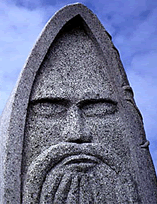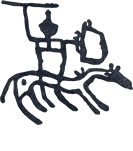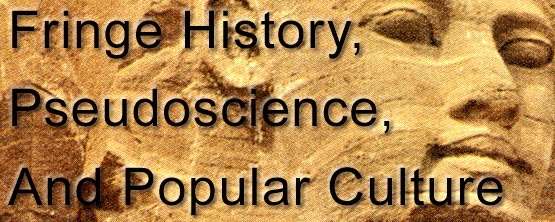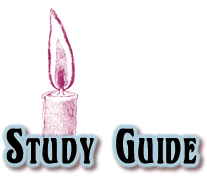|
|
|
|

Viking Monument
in Iceland   |
|
 
The Ten Lost Tribes: N O T E : Some of the terms I have listed are not defined in the book. The author expects the reader to know what they mean. So you will need to look them up in a dictionary or encyclopedia. Introduction 1. According to Benite, why do people search for the Ten Lost Tribes? 2. What are the three meanings of the word “world” and why does Benite call his book a “world history”? 3. What does Benite mean when he says that his book is “paradoxically, a history of a nonexistent place”? 4. What are the three royal houses that claim to be descendents of the Ten Lost Tribes? 5. Who are some of the groups that claim to be descendents of the Ten Lost Tribes? 6. How has the lack of evidence about the Ten Lost Tribes affected theories about the Ten Lost Tribes? 7. How have the Ten Lost Tribes been treated in popular fiction? 8. What gives the story of the Ten Lost Tribes its persistence? 9. How does Benite relate the concept of ‘loss’ to the story of the Ten Lost Tribes? 10. What does Benite mean by “geographical theology”? 11. In what two respects does loss serve as a useful vehicle for world historical research? 12. How does the search for the Lost Tribes help to define the world? Terms (definition and significance):
Chapter One: 1. The Assyrians employed a policy of forced deportation of conquered peoples. How did forced deportations affect the population of ancient Israel? Why did the Assyrians employ the policy of deportation? How did the biblical accounts and the Assyrian accounts describe the deportations? How did the deportation of the Ten Tribes of Israel compare with the deportation of other conquered peoples? 2. How the Assyrians conceive of the geography of the world in terms of their empire? What was the propaganda of Assyrian imperialism and what was the reality of Assyrian imperialism? How did the Assyrian view of the world impact Biblical writers like Isaiah and how did it affect the story of the Ten Lost Tribes? 3. What was the history of the southern kingdom of Judah compared to that of the kingdom of Israel? How did the writers of Judah view their history and that of Israel? How did their view of history alter the story of the Ten Lost Tribes into a narrative of divine punishment? 4. Compare the diasporas of Israel and of Judah. How did the Biblical prophets deal with the two diasporas in their writings? Terms (definition and significance):
Chapter Two: 1. How do the book of the Apocrypha and the writings of Flavius Josephus treat the story of the Ten Lost Tribes? 2. How did the introduction of the migration to Arzareth change the nature of the Ten Lost Tribes? 3. What is the role of Ezra in the Biblical narrative of the Babylonian Captivity and the Return? How did that impact the narrative of the Ten Lost Tribes? 4. How did rabbis of the era of Imperial Rome describe and interpret the exile of the Ten Lost Tribes and contrast it to the exiles of the Jews? 5. What role did the Sambatyon play in the narrative of the Ten Lost Tribes? 6. How are the Ten Lost Tribes associated with Jewish Messiahism? Terms (definition and significance):
Chapter Three: 1. What type of rumors about the Ten Lost Tribes circulated in the Jewish community of Tunisia during late antiquity? 2. In what way was Eldad Ha-Dani a “trickster”? Who was he really and how did his background affect the stories he told the Jews of Tunisia? 3. How did the Jews of Tunisia react to the stories of Eldad Ha-Dani? What was Eldad’s greatest contribution to the history of the Ten Lost Tribes? 4. What is the story of Prester John and how is it related to the Ten Lost Tribes? What was Benjamin of Tudela’s contribution to the history of the Ten Lost Tribes? 5. How did the Mongols fit into the history of the Ten Lost Tribes, particularly in the work of John of Mandeville and Rabbi Abraham Abulafia? Terms (definition and significance):
Chapter Four: 1. How did pogroms and mass conversions of Jews in Spain and Portugal influence the attitudes of Jews in Western Europe toward the story of the Ten Lost Tribes? 2. What developments occurred in Yemen and Ethiopia that formed the context and background of David Reuveni’s visit to Rome? 3. What was David Reuveni’s plan for a war against Islam and how was it connected to Portuguese explorations in Africa and the Indian Ocean? 4. Describe the career of Pedro de Covilhan. 5. How did the cosmography of Rabbi Abraham Farissol attempt to fit the Ten Lost Tribes into the geographical discoveries of the fifteenth and sixteenth-century Europeans? Terms (definition and significance):
Chapter Five: 1. Who was Antonio Montezinos and what was his story? 2. How did Columbus use Biblical prophecy to form his worldview and how did it relate to the Jewish Indian Theory? What were the two critical questions associated with the Jewish Indian Theory? 3. What is meant by the nordification of the Ten Lost Tribes and was its significance? 4. What is the concept of “restitution” and what role did John Calvin play in formulating it? 5. How did Abraham Ortelius and Guillame Postel contribute to the development of the Ten Lost Tribes narrative? 6. What role did the Canary Islands and their inhabitants play in the Jewish Indian Theory? 7. What were the various Spanish ideas about the origins of the American Indians and the Ten Lost Tribes in America? Terms (definition and significance):
Chapter Six: 1. How was the story of the Ten Lost Tribes used in political debates in England and the United States during the seventeenth century through the nineteenth century? 2. Describe the influence of Manasseh Ben-Israel’s ideas about the Ten Lost Tribes on English theological debates and politics. 3. How did Manasseh Ben-Israel’s depiction of the Ten Tribes as global wanderers affect where he located the tribes? 4. How does Mormonism use the concept of the Ten Lost Tribes in its theology? 5. Describe the origins and evolution of Anglo-Israelism. Terms (definition and significance):
Conclusion 1. How and why did the search for the Ten Lost Tribes change from locating them to identifying them during an age of Global Empire? 2. What does the author mean when he talks about the Ten Lost Tribes becoming a “Modern Geographical Mystery?” 3. How did romantic travel and adventure literature of the eighteenth and nineteenth centuries deal with the Lost Tribes? 4. Describe the process by which the search for the Ten Lost Tribes was transformed from a Christian quest back to being a Jewish quest. 5. How has the creation of the state of Israel changed the story of the Ten Lost Tribes? 6. Describe how the story of the Ten Lost Tribes generates a sense of loss but also stimulates the activity of creation? Terms (definition and significance):
Printer FriendlyFor a printer-friendly version of this webpage, If you don't have the Reader on your pc,
Click on the map of Atlantis  |
|
|
|
Historian, author, teacher, and higher education administrator, Dr. Ronald H. Fritze is Dean of the College of Arts and Sciences at Athens State University in Athens, Alabama. Ron has written for CornDancer since 2004. |
|
|
|
|

